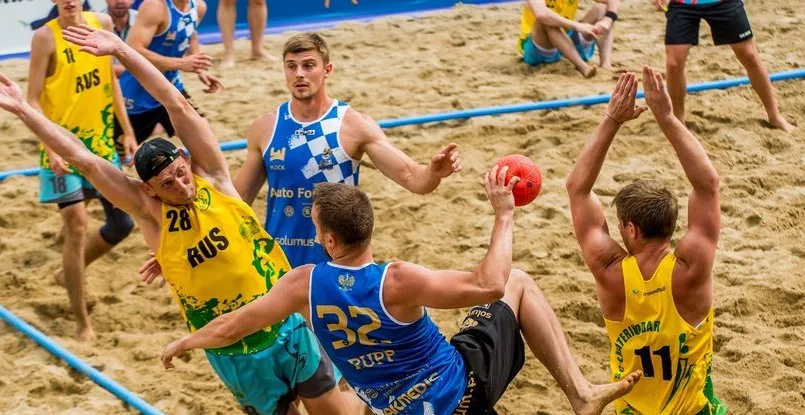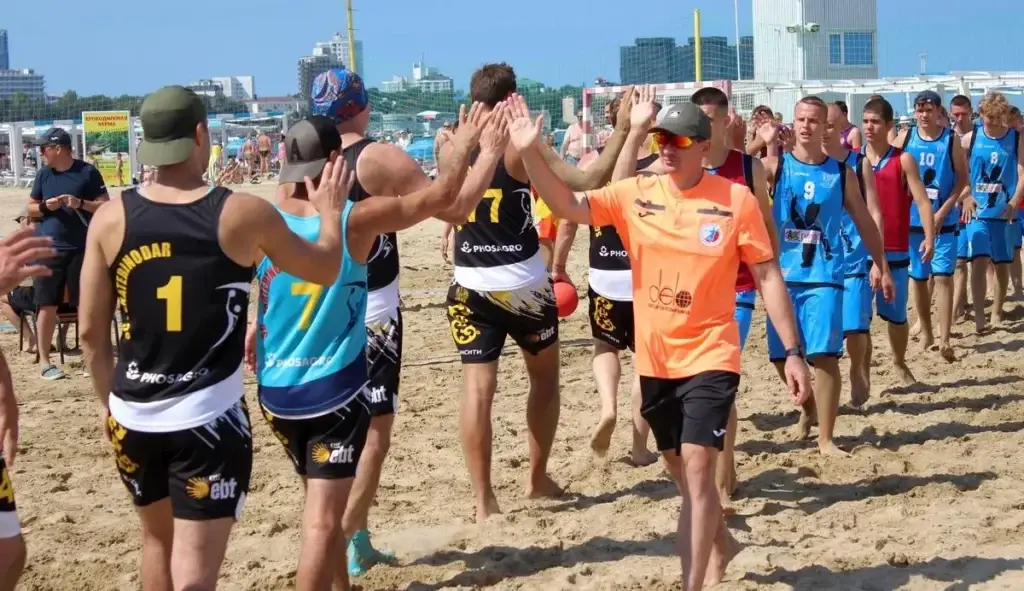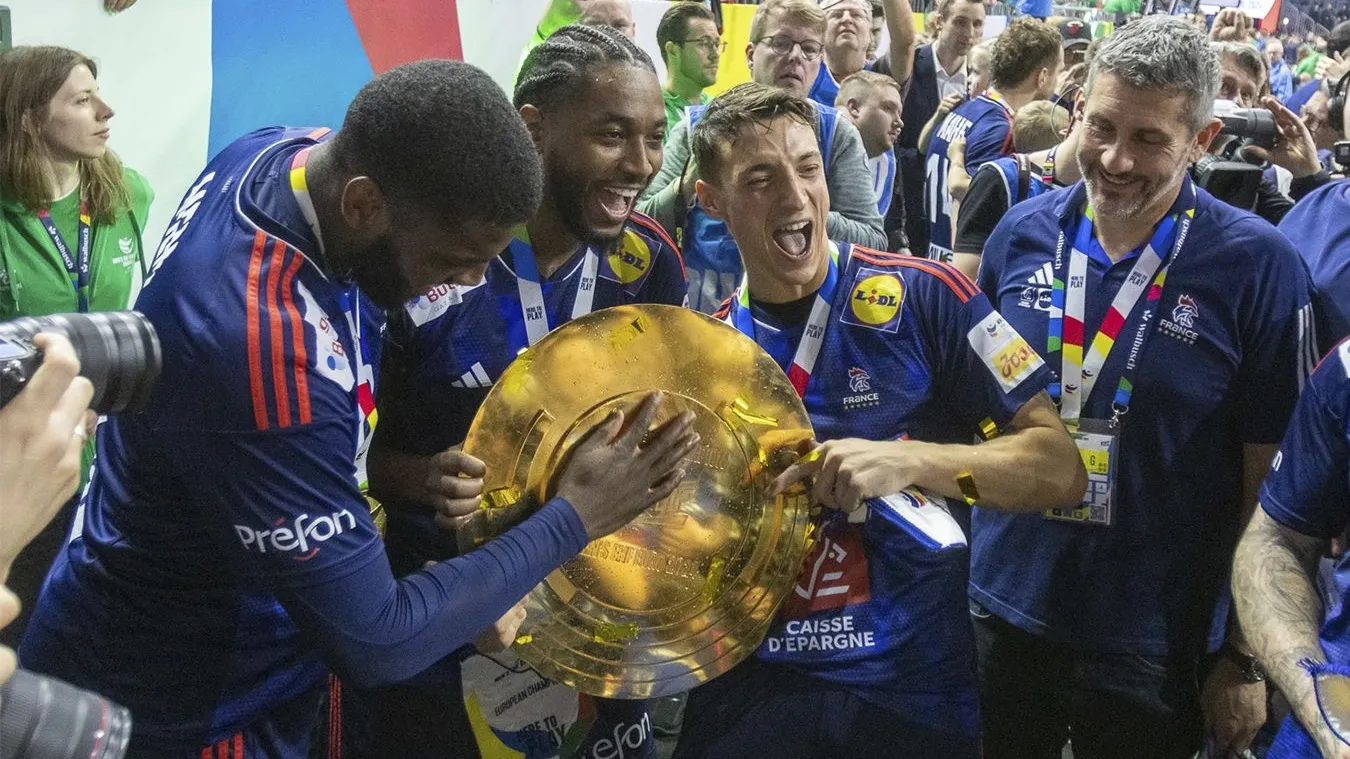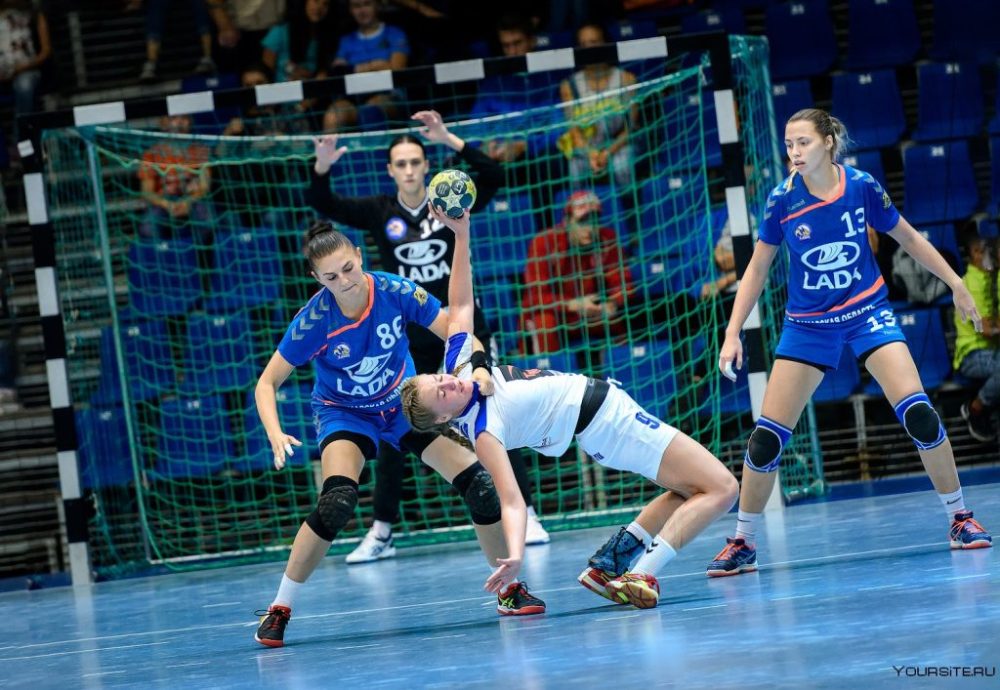Beach handball is a true combination of excitement, team spirit and endless fun in the sun. The sport originated on the warm beaches of Europe and is rapidly gaining popularity around the world thanks to its dynamism and spectacle. Beach handball first appeared in Italy in the early 1990s, when a group of people decided to combine classic handball and summer fun on the sand. Since then, the discipline has captured the hearts of outdoor enthusiasts and professional athletes. The unique atmosphere of the sand court, the constant battle and the incredible acrobatic techniques make this format an unforgettable spectacle.
History of beach handball: from idea to international success
The idea for beach handball came from Italian coach Salvatore Ferace. He was inspired by the atmosphere of beach tournaments and decided to adapt the rules of classic handball to play on the sand. The first match took place in 1992 on a beach in Italy and it was already clear that the sport had huge potential. The exciting dynamic, which requires great physical fitness and excellent ball skills, quickly gained popularity among spectators. In 1995, the first international beach handball tournament was held, attracting the attention of the global sports community.
Today, this format is part of the World Games programme and in 2001 it became an official sport under the auspices of the International Handball Federation (FIH). An important milestone in its development was the World Cup, which has been held regularly since 2004 and brings together the best teams from around the world.
Beach handball in Russia
The sport began to develop in Russia in the early 2000s, when athletes first organised unofficial tournaments on the shores of the Black Sea. Since then, interest in the sport has grown significantly and in 2013 the Russian team participated in the World Championships, where it achieved a good result. Today, regional and all-Russian competitions are held in the country, where amateurs and professionals from all corners of Russia participate. The development of beach handball is actively supported by coaches such as Sergey Ryabov and Alexey Kuznetsov, who have contributed to the popularisation of the sport.
Rules of the game: how to understand and love beach handball
The pitch measures 27×12 metres and there are fences of 2×3 metres on each side. Each team consists of four players: three field players and a goalkeeper. Unlike the classic version, the game on the sand is played in two 10-minute halves, allowing the intensity to remain high throughout the game.
One of the unique features of beach handball are the so-called ‘spin shots’ and ‘flying shots’, acrobatic techniques for which the group gets extra points. The athletes have to move constantly on the sandy pitch, which requires good physical fitness and coordination.
Differences between beach handball and classic handball
The main differences are not only in the coverage of the pitch, but also in the dynamics of the matches themselves. The classic format uses a hard surface and a much larger number of participants, while in the beach variant, the speed and flexibility of the individual handball player play the main role. On the sand, the game takes place in a freer and more relaxed atmosphere, but it also requires high reaction speed and the ability to make quick decisions. The sand surface makes it very difficult to move and players must have special physical stamina and be able to make accurate throws in all conditions.
Equipment and preparation for the game
 First, there is the ball, which differs from the classic ball in that it is smaller and has a special material that gives it better grip in sandy field conditions. The goal, as mentioned above, is 2×3 metres in size and is made of light but strong materials so it can be easily transported and placed on the beach.
First, there is the ball, which differs from the classic ball in that it is smaller and has a special material that gives it better grip in sandy field conditions. The goal, as mentioned above, is 2×3 metres in size and is made of light but strong materials so it can be easily transported and placed on the beach.
Athletes wear lightweight outfits (shorts and T-shirts) to better withstand the hot conditions. The sandy surface of the court also requires special footwear or playing barefoot, depending on the conditions of the tournament in question.
Beach handball as a sports spectacle
Unlike the classic format, where mistakes can be compensated for thanks to the large number of handball players, in the beach version every setback becomes obvious. Participants must have excellent coordination, high reaction speed and be able to make quick decisions. Handball player Ivan Sokolov, for example, is famous for his incredible flying shots, which often earn his team extra points. The cohesion of the whole team and the ability to understand each other without words is what makes beach handball so spectacular.
Tournaments and competitions
International tournaments bring together teams from all over the world and attract thousands of spectators. One of the most famous is the World Championships, held every two years under the auspices of the FIH. There are also continental championships and regional tournaments, such as the European Beach Handball Tournament, which has become one of the most prestigious events in the field. There are also:
- Mediteran Cap, which is held among Mediterranean countries and is famous for its warm atmosphere and the strength of its participants.
- Pan American Beach Handball Championships – a major competition for the countries of the Americas that determines the continent’s best players.
- Asian Games – are organised under the auspices of the Asian Handball Federation and include teams from different countries in the region, ensuring high competitiveness and spectacle.
Beach handball matches are always held in the relaxed atmosphere of a summer holiday, attracting a large number of spectators and outdoor enthusiasts. The athletes showcase not only their physical fitness but also their creativity in throwing, making every match a true spectacle.
Conclusion
 Beach handball combines dynamism, excitement and summer atmosphere. Unique rules, colourful tournaments and incredible throws make it a great choice for both professional athletes and people who just want to be active on the beach. Try picking up a ball and playing with friends to experience first-hand the energy and drive this format offers.
Beach handball combines dynamism, excitement and summer atmosphere. Unique rules, colourful tournaments and incredible throws make it a great choice for both professional athletes and people who just want to be active on the beach. Try picking up a ball and playing with friends to experience first-hand the energy and drive this format offers.
 en
en  ru
ru  de
de  ar
ar  es
es  nl
nl  hi
hi  fr
fr  it
it  pt
pt  el
el 










